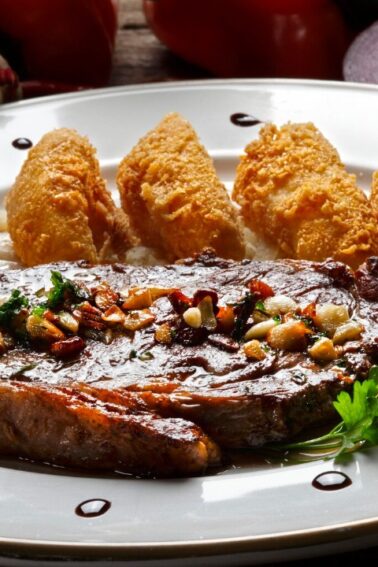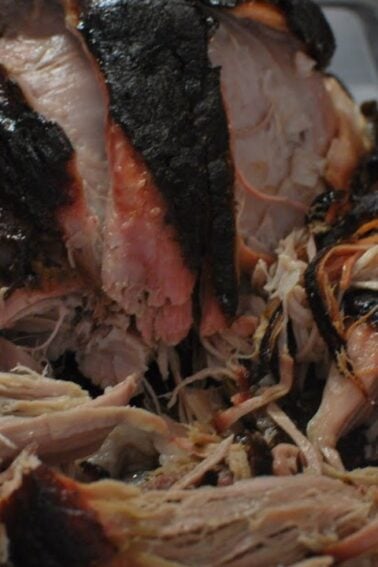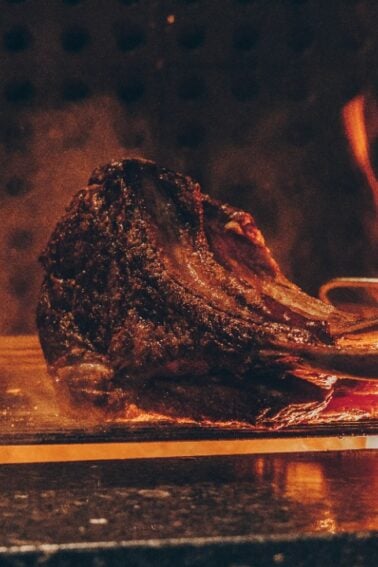Deli roast beef has a mystique all its own—rosy slices piled high on a sandwich, impossibly tender yet full of flavor, with a savoriness that feels hard to replicate at home. Many cooks have tried, only to be left with a dry, uneven roast that tastes more like Sunday dinner leftovers than the stuff of corner-deli legend. The difference isn’t just luck or equipment. It comes down to the beef itself, the way it’s aged and seasoned, and the patience and precision of the cooking process. Understanding what delis do differently is the first step to bringing that same flavor into your own kitchen.
The Importance of Beef Quality

When it comes to the taste of your roast, the quality of your beef can make a substantial difference. Commercial grade beef, the type most commonly found in supermarkets, is typically leaner and less marbled than premium grade beef, which delis often use. The marbling, or intramuscular fat, in premium beef melts during cooking, infusing the meat with a rich, mouthwatering flavor and tender texture that is hard to replicate with commercial-grade cuts.
Furthermore, the cut of beef you choose can also have a significant impact on the taste. Cuts such as the eye of round, top round, or bottom round roast are popular for home cooking due to their affordability. However, delis often opt for cuts like the rib roast, which is more marbled and yields a more flavorful roast beef.
Cooking Techniques and Tools

The temperature and duration of cooking can greatly influence the taste and texture of your roast beef. Overcooking can result in tough, dry meat, while undercooking may leave it too chewy or bland. Delis often use specialized roasting equipment that allows them to precisely control the cooking conditions, ensuring a perfectly cooked roast every time. In contrast, conventional home ovens can fluctuate in temperature, leading to less consistent results.
The method of cooking also plays a significant role in the flavor of the roast. Whether it’s roasting, boiling, or slow cooking, each method imparts its own unique flavor profile to the meat. Delis often slow roast their beef, allowing the flavors to develop over a longer period, resulting in a more complex and succulent taste.
Seasonings and Marinades

Seasonings and marinades are another key differentiator between home-cooked and deli-style roast beef. Delis often have their own secret blends of spices and herbs that they use to season their roasts. These blends are carefully crafted to complement the flavor of the beef, enhancing its natural taste rather than masking it. If you’re using a simple salt and pepper seasoning at home, you might be missing out on some of these subtle flavor enhancements.
Brining, a process of soaking the beef in a saltwater solution, can also contribute to a more flavorful roast. It not only helps to tenderize the meat but also allows it to retain more moisture during cooking, resulting in juicier, more flavorful roast beef. This technique is commonly used in delis, but less so in home kitchens, and could be the secret ingredient you’re missing.
Aging Process and Preparation

The aging process is another factor that can significantly impact the flavor of your roast beef. Aging allows enzymes in the beef to break down the muscle tissue, resulting in a tender and more flavorful roast. Delis often age their beef for several weeks, something that is less common in home cooking due to the time and controlled conditions required.In addition to aging, the way the beef is prepared before cooking can also influence its taste.
Trimming excess fat, tying the roast for even cooking, and allowing it to come to room temperature before cooking are all steps that delis take to ensure their roast beef is the best it can be. If you’re skipping these steps at home, you might be compromising the taste of your roast.
Matching Sides and Sauces

The sides and sauces you pair with your roast beef can greatly enhance your overall taste experience. Delis often serve their roast beef with sides like coleslaw, potato salad, or pickles, and sauces like horseradish or mustard. These sides and sauces are chosen to complement the flavor of the beef, adding an extra layer of complexity to the dish.
Recreating these sides and sauces at home can bring your homemade roast beef closer to the deli experience. For example, you could try making a homemade horseradish sauce, or a tangy coleslaw to serve with your roast. By paying attention to these details, you can elevate your homemade roast beef to new levels of deliciousness.
Hungry for more? Subscribe to our newsletter and become part of the world’s best meat community! From grilling tips to smoky secrets, we send you the best recipes, guides, and expert advice to master every cut.













